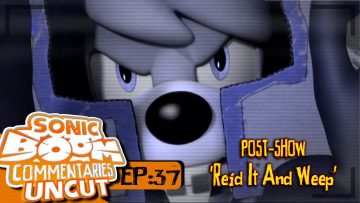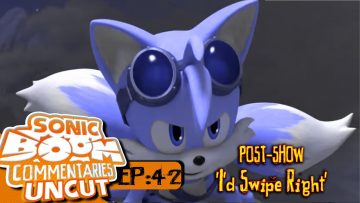
Review Slew: Super Smash Bros. Brawl
Until my junior year in high school, I didn’t have the slightest idea what Super Smash Brothers even was. I didn’t own a Nintendo 64 and at the time, my Saturn and Dreamcast suited my desire to fight very well, with Fighting Vipers, Virtua Fighter, and Last Bronx–all classic Sega franchises. Because I was not a Nintendo GameCube owner until my senior year of high school, when I finally conceded the Dreamcast was doomed, I ended up buying only a Wavebird controller to play Super Smash Brothers Melee with my friends.
I wasn’t great at it. I didn’t have the time to put in to break in all the characters, much less train on them. Eventually I settled on Zelda–really, her alter ego Sheik. I could always clobber my friends in the Hyrule Temple, because it was next to impossible for them to send me flying out. I was…moderately successful at Samus. I also remember vividly how overjoyed I was that I was able to beat a Level 9 CPU Pikachu when my friends had their giant tournament.
The thing is, I didn’t need to own Melee to know that this was a special game. Nintendo made a game that was easy to learn, and hard to master. The basic mechanics of Melee were so unlike what I was used to in Virua Fighter, or Tekken, or Dead or Alive–in that there are added strategic elements to consider; that it’s not completely a button masher. From how you attack, dodge, counter, and even interact with stage elements, Melee brought about simple yet powerful tweaks to a tried and true fighting formula countless other companies stick with, year after year. It, along with Sonic Team’s commitment to the console, was a major reason I bought a GameCube, and why the Wii is the only next-gen console I own presently.
There could have been no follow-up to Melee, and it would still be a game that is played for years to come. Some die-hard SSB enthusiasts wish there was no follow-up in Super Smash Brothers Brawl. Their concerns are legitimate on both practical and personal levels. Yes, the controls are much tighter than in Melee and they will take some getting used to. No, you can’t Wavedash anymore. Yes, some of the stages are a bit simplistic and hence repetitive in design. No, I don’t get the point of why there are timed demos of Nintendo classics taking up disc space, however small it may be. And yes, some folks are just not willing to accept change, and that’s understandable–why mess with an already excellent product? But, no, this game is not Melee Plus.
Brawl’s objective is to both win over the Melee players of yesteryear and to bring in a whole new crowd of gamers. So, the Classic mode remains (and spoiler alert: once you get all 35 characters you have the option of a much more difficult All-Star mode) as do multiplayer options. The trophies also make a return appearance and they are numerous, with almost as many ways to earn them. Multi-Man Melee is back. That confounded Hammer item that almost guarantees an instant KO is also there.
But the new is almost overwhelming; certainly it’s enough to scare Melee faithful into believing this game is more about content than character. Brawls can happen online, “with friends” or “with anyone,” and with taunts to boot. The Stage Builder exists to appease those who think Sakurai and company got it wrong with his design choices. The Final Smash is a very controversial addition among tournament sticklers, and robust discussion continues in the SSB community as to whether the item should be allowed in playoffs. Stickers are just as plentiful as trophies, and they can do anything from power you up in the Subspace Emissary to serve as simple decorations. Oh yes, and there is that hybrid fighting / platform mode that is the SSE, the largest and perhaps most talked about addition.
If you have no friends around to Brawl the night away, the SSE will be the primary way you unlock characters and uncover rare trophies. Remember how awful Mortal Kombat Mythologies: Sub-Zero was? Over ten years later, those who want to fuse those two genres have only learned marginally from this travesty. I’m not saying the SSE is bad, it’s just…a necessary evil. It’s necessary for some because…well, you want to get all the characters, right? It’s evil as the control scheme did not change between standard Brawl and this mode. In some areas–particularly where the stage scrolls–this is unacceptable. Sure, one could argue the element of challenge comes into play, and this mode may ultimately help you become a better fighter, but for the most part, the SSE is a glorified beat-em-up. There are plenty of enemies on which to unleash the best, and you’ll get a chance to get familiar, at least, with most in the roster, but it can get quite repetitive. Punch, punch, kick, kick, Up+B move, watch out for the psychic power, lather, rinse, repeat. Sometimes the Subspace Emissary can get boring, other times it’s just annoying. Rarely is it fun.
Balancing and compensating for the rare miss is Brawl’s online mode which, alone, should have you playing this game for years. Brawl makes it very easy to pick up and play, whether it’s with those you know, or those you don’t. Anonymous play is simplified and impersonal–which is helpful if you have uncontrolled urges to toss expletive filled taunts at your opponent. You can save that for the Brawl with your friends, where you can program four different taunts, choose a wide array of avatar icons, including your Mii and unlockable trinkets, and…yes, learn another friend code. How the standard Wii friend codes still cannot be integrated into a Nintendo first party title at present is baffling. Still, it is forgivable, as is the lag that comes with online play. There is a continued expectation that the servers will be to their max for several more weeks, if not months. If you have friends thousands of miles away, however, this is still a great way to throw down for bragging rights however you wish–custom rules can be set between friends. Equally smart is the AI’s ability to assume the role of an online player with a dead connection. If your opponent is good, you’ll be able to figure out the switch, but at least you’ll get to continue playing.
Out of all the online modes, my interest was directed most to the Spectator Mode. The constant entertainment provided by the service is a nice way to keep yourself occupied if, say, the cable (TV) is out, but not only that, it’s a great way to see what other Brawlers are doing around the world. You get to have a constant intimate look at their strategies, study them, and perhaps learn from them and apply it to your own tactics. For the compulsive gamblers of today and tomorrow, bets can be placed on a potential winner, and bonuses are awarded at random points. There’s certainly nothing like it in anything else I’ve seen or played as a gamer.
Almost as mesmerizing is the game’s soundtrack, which is expansive to begin with, but the more than 300 songs included will provide instant incentive to keep playing and keep grabbing those golden hammers. There will be something for everyone in this set, from classic Nintendo tunes to an instrumental version of His World from the ill-fated 2006 release of Sonic the Hedgehog. There are several remixes within, including a very nice Angel Island, but I would have preferred to hear more updates to the classics, instead of the classics themselves. That’s not to say they’re bad, but you can only take so much of the 80s bleeps and bloops. The Game and Watch remix is proof positive that these can fit in 2008; it would have been nice if there were similar treatment all around, and not just overwhelmingly for Super Mario or Donkey Kong, with sparse offerings elsewhere.
For the Melee faithful, much of the stages and music from the game return, much of them unlockable. The idea is noble; in practice it is both a blessing and a curse. On the one hand, it should, in theory, quell Melee purists and lure them into buying the game. Furthermore, it is very obvious that much less care and consideration was put into the new Brawl stages, giving the old school arenas that much more appeal. On the other hand…all this is happening with Brawl physics, and for those enthusiasts, they won’t get the core of what Melee still offers. One can then see the glass half-empty, in that a lot of this material is recycled, and much of that space and effort could have been put toward tweaking the physics, polishing the existing stages, and making the game that much more enjoyable. Sonic’s Green Hill Zone is one of the few exceptions to this lack of care and consideration; it shows polish and a real appreciation for the hedgehog’s heritage. I just wish that type of care could have been carried over to other arenas–even Snake’s stage, which for an unlockable goodie representative of a major secret character, is still pretty plain.
But that’s not to say that Super Smash Brothers Brawl is a disappointment; on the whole, it is good. The game will still be a gold standard for millions of gamers, and the constant stream of downloadable content and online play will keep them occupied for at least several years, if not a decade or two. It’s almost impossible to not like this game; you will find something in there that suits your tastes, even if it’s something as simple as the Home Run Contest. But it’s just as difficult to give Brawl a glowing, perfect recommendation. It’s because of the mentality Sakurai and his team seemingly took to please every facet of the gaming community that results in the final product’s weak point. Apart from how relatively well online modes are executed, there is no single component of the offine game that stands out as revolutionary or even excellent. The spirit of Smash Brothers has been overhauled, but that’s not necessarily good. Between tighter controls, uninspired stages, a whole mode out of left field in the Subspace Emissary, and useless modes like the Masterpiece area…well, it’s like the old saying goes, you can’t please everyone. If you try to, you’re almost guaranteed to leave someone disappointed. In my case, a lot of why I fell in love with Super Smash Brothers in the first place seems swept in the background–or, at least, attempted to be.
A sensory overload of all things Nintendo isn’t needed when all you want to do is get together with your friends and duke it out. On that simple objective alone, this game still succeeds. However, if we see a follow up to Brawl that puts quantity over quality again, it’ll be easy to understand why the confused, jaded and disappointed SSB faithful appear in droves and vocally express their longing for the days of Melee.



![[ID: UxoUeN598P8] Youtube Automatic](https://lastminutecontinue.com/wp-content/uploads/2023/04/id-uxouen598p8-youtube-automatic-360x203.jpg)


![[ID: YMJgDZWzEYY] Youtube Automatic](https://lastminutecontinue.com/wp-content/uploads/id-ymjgdzwzeyy-youtube-automatic-360x203.jpg)